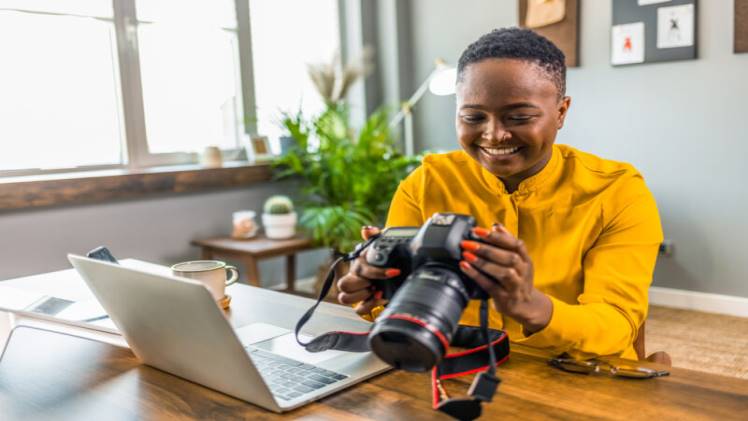Daniel Doyle Pleasantville Photographer Shares Tips For Capturing Unique Detail in Macro Photography

Macro photography is a genre that involves taking extreme close-up shots of tiny objects, which are usually not visible to the naked human eye. Macro photography is known for its intricate details and precise focus, making it one of the most fascinating forms of photography.
However, capturing these minute details requires a keen eye, technical knowledge, and practice. To help you improve your macro photography skills, we have collaborated with professional photographer Dan Doyle Pleasantville, who has shared some tips for capturing unique detail in macro photography.
Use The Right Equipment
The foremost thing to consider when it comes to macro photography is equipment. You need a suitable camera, lens, tripod, focusing rail, and flash unit to capture the tiny details accurately.
A macro lens is the most crucial factor in flawlessly capturing details. These lenses zoom in on the minute details and ensure clarity and depth in every shot.
The focusing rail enables precise fine-tuning, and a tripod helps steady the camera. Moreover, a flash unit can aid in illuminating the subject, thus reducing the possibility of blur due to hand or subject movement.
Get Up Close And Personal
When taking macro shots, getting as close to your subject as possible is essential. The closeness allows you to capture every tiny detail in your image.
With most macro lenses, you can get within a few inches of your subject without losing focus. If you don’t have a macro lens, try using extension tubes or a close-up filter to get even closer.
Use A Tripod
When taking macro shots, even the slightest movement can cause your image to be out of focus. A tripod can help you stabilize your camera and keep your picture sharp.
Click here for more update: Smihub
If you don’t have a tripod, try setting your camera on a stable surface, like a table or bench.
Find Unique Subjects
Macro photography provides an opportunity to explore the tiniest details of the world around us and capture them in a visually stunning way. You can find unique subjects almost anywhere if you are observant enough to spot them.
For instance, to capture their unique details, you can photograph insects, flowers, jewelry, or even mundane objects around you, such as buttons, fabric, and feathers. It’s essential to think about the background and setting of the subject you are capturing to add depth and interest to your shots.
Stay Patient
Patience is a virtue, especially in macro photography. Animals and insects, in particular, have a mind of their own and may not cooperate as you want.
But waiting and observing your subject will increase your chances of getting a perfect shot. Try to orient yourself to your subject’s behavior and habits – before you know it, you’ve captured the image you’ve been waiting for!
Play With Lighting
Macro photography requires perfect lighting to capture intricate details. The lighting variables will significantly impact the final image as you shoot up close.
Playing with lighting, color, and shadows can significantly influence your composition’s mood and style. Subtle variations in the light’s direction and intensity can illuminate details in ways you might not expect.
Also, using a diffuser over the light source can produce a natural and balanced image.
Experiment With Depth Of Field
Depth of Field (DoF) refers to the area of the photograph that is in focus, from foreground to background. One of the most effective ways to capture unique detail is to use selective depth of field in macro photography.
Selective focus means highlighting a specific subject area and blurring out other areas, bringing attention to the part of the object that you want to highlight and leading the viewers’ eyes logically through the picture. Decreasing DoF makes it easier to isolate the subject and blur the residual details, focusing on the essential elements of clarity.
Composition Matters
Composition is integral to any photography genre, and macro photography is no exception. Considering the technical and artistic aspects of composing the shot is vital.
How you position your subject within the frame, the angle of your camera, the background, and the foreground elements can all influence the final image’s visual impact. Paying attention to these small details can make a significant difference in capturing a unique piece.
Don’t Be Afraid To Get Creative
Macro photography opens up a world of creative possibilities. Try experimenting with different angles, compositions, and color palettes.
Look for interesting textures, patterns, and shapes in your subject. Feel free to get up close and personal with your subject, or to try new techniques, like focus stacking or using a macro flash.
Final Thoughts
Macro photography is a fascinating photography genre, and exploring this field’s intricacies is a rewarding and enthralling experience. However, by following these tips from Daniel Doyle Pleasantville, anyone can begin their journey toward excellent macro photography.
Any skill requires patience, practice, and experience, so keep clicking and experimenting. These tips will help you capture memorable and unique details in your macro shots. Happy clicking




